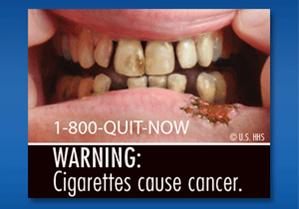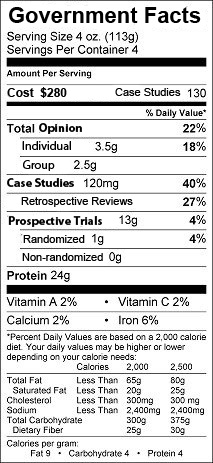He sat in a crisp white coat, staring at a computer screen, note cards in his lap. Occasionally, I noted him jot a note to himself as he compiled his list. A nurse sat next to him, pounding feverishly on the keyboard as she recorded her nurse’s note. He tentatively moved his mouse, then clicked, still staring.
I recall my first day in clinical medicine: no computer, an ER rotation, a white board filled with names and abbreviated medical problems next to them with little magnetic color-coded labels nearby. Room 1: Head trauma. Room 2: Abscess. Room 3: UTI, Room 4: Rash.
I got room 2. It was the biggest, bad-est infected sebaceous cyst on a guy’s back a newly minted doctor had ever seen. Can you say “softball?” “See one, do one,” they told me. And off I went.
Much in medicine has changed since then, but much remains the same. Medicine is miraculous, terrifying, then rewarding all at once. Fortunately, there’s a method within the madness that can serve to preserve and protect those who first start out. Every doctor has had the fortune to learn from those who passed before them as begin their journey to refine their title of “doctor” (literally, “teacher.”)
I thought it would be interesting to put a few of the “Rules of the Road for Medicine” down on paper (with the help of friends on Twitter) for interns and residents as they embark on their own incredible journey ahead. The list is not exhaustive, but hopefully can serve as a resource for our new doctors as they head off to meet their clinical challenges ahead.
Rule #1: Treat every patient like your mother
Obey this rule and you’ll do the right thing more often than not. If it means staying late, do it. If it means going the extra mile, do it. If people disagree as to a specific approach to care, ask yourself “What would my mother want?” Then go that direction. Be kind. Be respectful. Wear clean clothes, brush your teeth, comb your hair, and look your best. (Note:
@DrElizabethLee was quick to remind me that kids are not always kind and respectful, so their age might require a slightly more top-down, “parental” approach.)
Rule #2: There are an infinite number of ways to get screwed
That’s right – not a thousand, not a million, not ten billion – but an infinite number of ways… Check and recheck. If you’re not sure, check it again. Somewhere out there, born 20 years or so ago, there is a person whose sole mission in life is to thwart your efforts to protect your patient. It usually is not intentional, mind you, but it happens. Like the nurse who feeds the patient breakfast when they’re NPO after midnight, or the orderly who accidentally trips and pulls out the IV or better yet, the pacemaker wires. Oh yeah, it happens. So double-tape where single-tape might do. Communicate. Involve the team. If you’ve got a better idea, say so. If someone else has a better idea, defer to them. Park your ego at the door and work to avoid the errors. Everyone will benefit if you do.
- Corollary: “If there’s a test for it, just get the test.” (h/t: @gruntdoc)
Rule #3: Do the rectal.
Surgeons always emphasize this point, but it extends far beyond the obvious. Consider it shorthand for “do the physical.” Trust no one except yourself and what you see, hear, and feel. More often than not, you’ll be rewarded with the satisfaction of finding something no one else has, simply because you made the effort to lift the covers and do the exam.
- Corollary: Believe none of what your hear, half of what you see, all of what you do. (h/t: Benjamin Franklin via @MGKatz036)
Rule #4: Medicine is like life – no “always” and no “nevers”
So research, research, research. Don’t be cocky. Humility is paramount since there’s nothing like the vagaries of medicine and individual circumstances and personalities to take the wind out of your sail. No single person (or website) has all the answers. Attend the lectures while you still can: you’ll never be spoon-fed like that again. Remember: the learning never ends. (h/t
@sonodoc99 and
@shartiga)
Rule #5: Your family is your anchor
Spend time with them. Make them a priority. Surprise your spouse or significant other with flowers, or better yet, carry-out. If safe to do so, leave work to attend the kids’ assemblies at school or their sports games and return later if you still have work to do. Do this and they might even help with your laundry once in a while. (h/t
@DoctorNatasha)
Rule #6: It’s okay to say “I don’t know”
… just be sure to add “… but I’ll look it up.” More often than not, someone else might have an idea, so bring in the cavalry. Use the phone and call the expert – even if he or she is in another state or country. Still, if the answer remains elusive, it really is okay to say you really don’t know what to do. Sometime there is nothing you can do. And once in a while when all other options have been exhausted, don’t forget to ask the patient or family for their help to see if they have another idea that you haven’t tried. (h/t:
@kevinmd)
Rule #7: If you screw up, say you’re sorry.
Lots has been written on this, and certainly there’s an appropriate time and place for doing so, but take the time to offer your apologies if a mistake occurs. Work to make sure the mistake doesn’t happen again and realize there is an important bond that forms when a doctor sticks with his or her patient through thick and thin. (h/t:
@kevinmd)
Rule #8 – Play nice
Nurses, respiratory technicians, physical therapists, nurse practitioners, dietary personnel, pharmacists, and the EMT's/paramedics are your friends – keep them that way. Be respectful, appreciate their skills, and use their expertise. Most important, before you try to lie down on call, ask the covering nurse(s) if there’s anything they need before you retire. It might just save you a page. (h/t:
@rlbates)
Rule #9 – Crazy people get sick, too
So be sure to attend to rules #1, #2, and #3. (h/t:
@InpatientMed
Rule #10 – Do the dirty work
All you have to do is help with nurse with a digital disimpaction, enema, or cleanup of a dirty bed and you’ll be an instant hero. Word travels fast. After all, believe it or not, you are not above the others. You are part of a team: just one member with a bit more responsibility at times. By helping, you’ll be helped. By caring, you’ll be cared for. And sometimes, your new patients or colleagues might even bring you cookies.
-Wes
10:20PM CST Addendum: The corollary to Rule #3 was added and edits to Rule #8 made to include EMT's and paramedics. Thanks to all those who have contributed to this post! (Keep 'em coming!)





